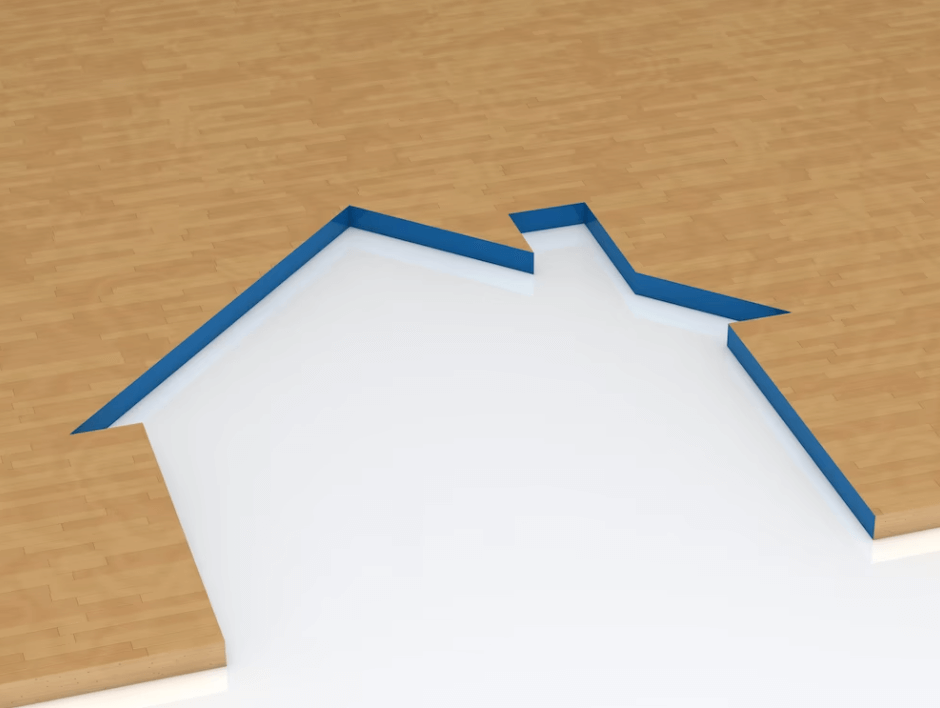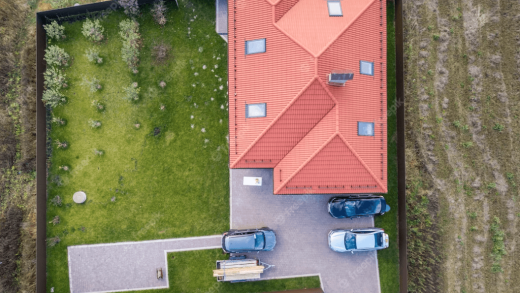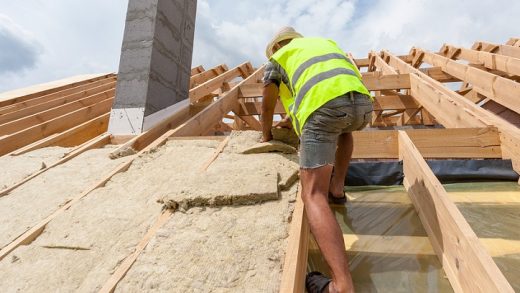Tips for Growing Sales with Unlimited DIY Roof Reports
Are you looking for a way to boost sales in your roofing business? Look no further than DIY Roof Reports! These reports provide customers with a detailed understanding of the condition of their roof and recommendations for repairs or replacements. Not only do they help customers make informed decisions, but they also build trust and showcase professionalism. In this blog post, we’ll explore how
DIY Roof Reports can revolutionize your sales strategy and provide tips on how to create effective reports that drive growth.
So buckle up and get ready to learn why DIY Roof Reports are essential for any successful roofing business!
What is a DIY Roof Report?

A DIY roof report is a document that provides detailed information about the condition of a roof. It is created by roofing professionals who evaluate the roof and its components, including shingles, flashing, gutters, and vents. The report typically includes photographs and descriptions of any issues found during the evaluation.
One of the benefits of a DIY roof report is that it allows homeowners to understand the current state of their roof without having to rely solely on the opinion of a roofer or contractor. With this information in hand, they can make informed decisions about repairs or replacements.
Another benefit is that it provides transparency between homeowners and roofing professionals. By providing an objective assessment of the condition of their roof, homeowners can be confident that they are working with a trustworthy professional who has their best interests in mind.
DIY roof reports are valuable tools for both homeowners and roofing professionals alike. They provide clarity on what needs to be done to maintain or improve a home’s most important asset – its roof!
Components of an Effective Roof Report
A well-crafted DIY Roof Report is the backbone of any successful sales strategy in the roofing business. But what makes a roof report effective? Let’s take a closer look at some of its key components.
1. Detailed Description of the Roofing System: An effective roof report should include a detailed description of the existing roofing system, including its age, type, condition, and any damage observed during inspection. This information helps to establish trust with customers by demonstrating your expertise and professionalism as a roofer.
2. Visual Elements: Incorporating visual elements like photos or diagrams in the roof report can help customers better understand the current state of their roof. This will make it easier for them to visualize how recommended repairs or replacements will impact their home.
3. Clear Recommendations: An effective DIY Roof Report must include clear recommendations outlining all necessary repairs or replacements that need to be made. These recommendations should be accompanied by cost estimates and timelines so that customers can make informed decisions about which services they want to move forward with.
By providing these key components within your DIY Roof Reports, you’ll not only showcase your professionalism but also demonstrate care for your customer’s needs – setting yourself up for success in growing sales!
The Value of a Detailed Roof Report
A detailed roof report is an essential tool for any roofing business. It provides accurate and comprehensive information about the condition of a customer’s roof, which can be used to identify potential problems and develop a plan for repairs or replacements.
A well-crafted DIY roof report increases transparency between the sales team and customers, building trust in the process. By sharing detailed reports with customers, they gain confidence that their needs are understood by your company. Customers will feel taken care of knowing you’re invested enough in their property to offer them an easy-to-read report on what’s happening with their roofs.
Roofing professionals who use detailed reports are able to provide clear recommendations based on tangible evidence rather than guesswork. This helps guide homeowners toward informed decisions about possible solutions.
Additionally, providing value-added resources like these reports sets your roofing business apart from competitors. The willingness to go above and beyond in delivering quality products and services enhances both customer satisfaction levels as well as boosts sales numbers over time!
How DIY Roof Reports Boost Sales
DIY Roof Reports can boost your sales in several ways. Firstly, they help build trust with your customers by offering transparency and clarity about the condition of their roof. By providing a detailed report of any issues identified during inspection, you are showing your clients that you have nothing to hide and that you care about their safety.
Secondly, DIY Roof Reports showcase professionalism. Providing comprehensive documentation is an indication of expertise in the roofing business. Customers appreciate when businesses go above and beyond to ensure quality service delivery.
Thirdly, DIY Roof Reports help customers understand their needs better. The reports provide information on what repairs or maintenance work is required for their roofs, ensuring they fully comprehend why particular services are necessary.
Creating effective DIY Roof Reports requires understanding common roofing problems and incorporating visual elements like photos or diagrams to make it easier for clients to visualize the issues identified. Your recommendations should be clear and precise too.
Integrating DIY Roof Reports into your sales process involves conducting thorough initial consultations and evaluations before creating customized reports tailored specifically for each client’s unique needs. Training team members on how to create these reports may also come in handy.
Leveraging advanced strategies such as using past reports as templates for future ones saves time while still providing accurate records for comparison purposes over time.
Building Trust with Transparency
In the roofing business, building trust with customers is crucial for success. One way to build that trust is through transparency in your sales process. This can be achieved by providing a detailed DIY roof report to your customers.
By giving customers access to information about their roof’s condition, they are more likely to trust your recommendations and advice. They will see you as an honest and transparent business that cares about their needs.
Transparency also helps prevent misunderstandings or miscommunications between the customer and the roofing company. By being upfront about any issues found during the evaluation process, there are no surprises or hidden costs for the customer later on.
A DIY Roof Report provides transparency by including visual elements like photos and videos of the roof inspection so that customers can see exactly what issues were identified. It helps them understand why certain repairs or replacements are necessary.
Transparency builds long-lasting relationships with clients based on mutual understanding and respect. The more transparent you are with your customers, the more likely they are to recommend you to others in need of roofing services – which ultimately leads to growing sales for your business!
Showcasing Professionalism
One of the most important aspects of growing sales in your roofing business is showcasing professionalism. A DIY roof report that reflects your company’s expertise and attention to detail can set you apart from competitors.
Professionalism starts with clear communication. Your customers want to know what’s going on with their roofs, and they want a reliable source for information about potential issues and necessary repairs or replacements. By providing them with a detailed DIY roof report, you’re demonstrating that you take their concerns seriously and are able to offer comprehensive solutions.
In addition, your DIY roof reports should be well-organized and visually appealing. Use graphs or diagrams where appropriate to help illustrate key points or potential problem areas. Make sure all recommendations are clearly stated in easy-to-understand language so customers aren’t left guessing about what needs to be done.
Another way to showcase professionalism is through building trust with your customers by following through on promises made during the initial consultation phase of the sales process – make sure you deliver exactly what was promised in terms of services provided, timelines met, etc.
By focusing on these elements when creating your DIY roof reports, you’ll demonstrate a level of professionalism that will not only benefit individual sales but also build long-term relationships with satisfied customers who refer new clients over time.
Helping Customers Understand Their Needs
A crucial aspect of creating effective DIY roof reports is helping customers understand their needs. Many homeowners may not be familiar with roofing terminology or the various types of roofing materials available. As a result, they may have difficulty understanding what repairs or replacement options are best for their home.
To help customers understand their needs, it’s important to first listen to and address any concerns they may have. Ask them questions about their current roof and any issues they’ve noticed. By taking the time to listen and educate them on common roofing problems, you can build trust and establish yourself as an expert in the industry.
Next, provide clear explanations of recommended repairs or replacements in terms that are easy for the customer to understand. Incorporate pictures or other visual aids if possible, so they can see exactly what you’re talking about.
It’s also important to discuss different material options with your customers and explain how each one could benefit their specific situation. This will enable them to make informed decisions about which option is right for them.
By helping customers understand their needs through detailed explanations and simple language, you’ll increase the likelihood of closing more sales while building lasting relationships with satisfied clients.
Tips for Creating Effective DIY Roof Reports
Creating an effective DIY roof report can be the difference between closing a sale and losing it. It is important to take the time to create a thorough and detailed report that addresses all of the customer’s concerns.
To start, make sure you have a complete understanding of roofing issues and common problems. This will help you accurately identify any issues with the roof and provide appropriate recommendations.
Incorporating visual elements, such as photos or diagrams, can also aid in communicating information clearly to customers. These visuals can showcase areas that need repair or replacement, allowing customers to better understand their options.
Providing clear and detailed recommendations is crucial for gaining trust from potential clients. Make sure your recommendations are specific to their needs and budget.
When creating reports, it’s important not to overwhelm clients with technical jargon or irrelevant details. Keep language simple and concise so they can easily grasp what needs attention on their roof.
By following these tips for creating effective DIY roof reports, roofing businesses can provide valuable transparency in their sales process while increasing customer satisfaction leading to more closed sales opportunities.
Understanding Roofing Issues
As a roofing business owner, understanding the various roofing issues is crucial. A comprehensive understanding of these problems will equip you to create accurate DIY roof reports that cover all potential issues.
One common issue is water damage caused by leaks or poor drainage systems. Water infiltration can damage shingles, cause mold growth, and weaken the structure of your customer’s property.
Another major concern is damaged flashing, which could lead to water penetration in vulnerable areas like chimneys and vents. It’s important to identify any compromised flashings during inspections so they can be addressed promptly.
Poor ventilation in attics can also lead to moisture buildup, causing structural damages and health risks for occupants due to mold growth. Addressing this issue through proper insulation installation would improve airflow within the attic space, thereby preventing such damages.
By identifying these problems early on and providing expert recommendations on how best to resolve them professionally, you’ll earn your customers’ trust as an experienced roofing contractor who prioritizes their needs.
Incorporating Visual Elements
Incorporating visual elements is a crucial aspect of creating an effective DIY roof report. A picture is worth a thousand words, and this holds true when it comes to roofing issues. Including photos or videos in the report can help customers better understand the problems with their roofs.
Visual elements can also provide evidence of damage that may not be visible during an on-site evaluation. This helps build trust with the customer by providing transparency and clarity about their roofing needs.
Another benefit of incorporating visual elements is that they can create a more professional appearance for your business. Customers are more likely to take you seriously if your reports are visually appealing and well-organized.
When including visuals, make sure they are high-quality and clearly labeled so that customers can easily identify problem areas. Use arrows or annotations to draw attention to specific issues within the image.
Incorporating visual elements into your DIY roof reports can greatly enhance their effectiveness in growing sales for your roofing business.
Providing Clear and Detailed Recommendations
Providing clear and detailed recommendations is an essential part of creating effective DIY roof reports. After assessing the condition of a customer’s roof, it’s important to provide them with actionable steps they can take to address any issues that have been identified. These recommendations should be specific and tailored to the customer’s unique situation.
One key aspect of providing clear recommendations is using plain language that customers can easily understand. Technical jargon or industry-specific terms may be confusing for customers who are not familiar with roofing terminology. By breaking down complex concepts into easy-to-understand language, you’ll make it easier for your customers to follow your advice and take action.
Another important element is prioritizing recommendations based on urgency and budget considerations. Customers may not be able to address every issue immediately, so it’s important to help them prioritize which problems need immediate attention versus those that can wait until later.
Incorporating visual aids such as photos or diagrams can also enhance the clarity of your recommendations by providing a more detailed look at what needs fixing and how best to go about addressing these issues.
In summary, clear and detailed recommendations are crucial in helping customers understand their roofing needs while building trust through transparency in sales processes. It ensures that they feel confident in taking appropriate actions after reviewing their DIY roof report without feeling overwhelmed or intimidated by technical terms or jargon used by professionals within the roofing business sector.
Implementing DIY Roof Reports in Your Sales Process
Once you have a good understanding of what goes into an effective DIY roof report, it’s time to start incorporating this tool into your sales process. Here are some steps you can take:
1. Initial Consultation and Roof Evaluation: The first step is to schedule an initial consultation with the customer and evaluate their roof. During this evaluation, be sure to take detailed notes on the condition of the roof, any repairs needed, and other relevant details.
2. Creating the DIY Roof Report: After conducting the evaluation, use your notes to create a detailed DIY roof report that outlines all aspects of the roofing system. Be sure to include photographs and diagrams where necessary.
3. Training Your Team: As you implement DIY roof reports in your sales process, it’s important to train your team members on how to create these reports effectively. This will ensure consistency across all sales interactions.
4. Using Reports for Follow-Up: Once you’ve created a DIY roof report for a customer, use it as a follow-up tool during future interactions. Refer back to specific issues or recommendations made in previous reports as part of ongoing conversations with customers.
By integrating DIY roof reports into your sales strategy, you can provide more transparency and build trust with customers while also showcasing professionalism and expertise.
Initial Consultation and Roof Evaluation
The first step in implementing DIY roof reports into your sales strategy is to conduct an initial consultation and roof evaluation with the customer. This allows you to assess their roofing needs, determine any potential issues, and gather important information that will be included in the final report.
During this meeting, it’s important to establish a rapport with the customer and build trust by being transparent about your process. Ask them questions about their concerns or past experiences with roofing repairs or replacements. Listen actively and take notes so that you can tailor your recommendations specifically to their needs.
Once you’ve conducted a thorough assessment of the roof, use this information to create a detailed report outlining any issues or potential problems. Be sure to include photos or videos of areas of concern so that the customer can see for themselves what needs attention.
By offering this level of transparency and professionalism during the initial consultation and evaluation, customers are more likely to trust your expertise as they move forward with their roofing project. And when paired with a comprehensive DIY roof report, they’ll feel confident knowing exactly what work is needed on their roof.
Creating the DIY Roof Report
Creating the DIY Roof Report is an essential part of your sales process. It allows you to provide detailed information about the customer’s roof issues and what solutions are available. To create an effective report, start by understanding the roofing problem. Conduct a thorough inspection of the roof and identify all possible issues that need attention.
Incorporating visual elements such as images or videos into your report can help customers understand better what needs fixing on their roofs. Visuals also make it easier for you to explain complex concepts like ventilation systems or guttering problems.
The report should include clear and detailed recommendations on how to fix each issue identified during inspection. Use simple language that customers can understand, avoiding industry jargon that might confuse them.
Ensure that every recommendation has a corresponding estimated cost so that customers know exactly how much they will be spending if they decide to proceed with repairs or replacements.
Remember always to personalize each DIY Roof Report because every customer has unique requirements and expectations from their roofs. By tailoring your reports accordingly, you’ll increase trust in clients as well as improve branding for your business!
Training Your Team to Create and Use DIY Roof Reports
Once you’ve decided to implement DIY roof reports into your sales process, it’s important to train your team on how to create them. This will ensure consistency in the quality of reports being produced and allow for a smoother transition from traditional methods.
Firstly, make sure everyone has access to the necessary software or tools needed to generate the report. Whether it be a custom template or specialized roofing software, providing easy access will improve efficiency and cut down on mistakes.
Next, establish clear guidelines for what should be included in each report. Make sure everyone understands the importance of accuracy and detail when documenting roof issues and recommendations for repairs.
Encourage collaboration amongst team members by conducting training sessions where they can share tips and techniques. This not only fosters teamwork but also improves overall knowledge about roofing systems.
Provide ongoing support as your team adjusts to this new method of generating reports. Offer feedback on their work and address any concerns or questions that arise during the transition process.
By properly training your team on creating DIY roof reports, you’ll see an increase in productivity, customer satisfaction, and ultimately sales growth within your roofing business!
Advanced Tips for Leveraging DIY Roof Reports for Sales Growth
After creating and implementing DIY Roof Reports in your sales process, it’s time to take the next step towards leveraging them for maximum sales growth. Here are a few advanced tips to help you get the most out of your investment.
Firstly, use DIY Roof Reports as a tool to upsell additional services or products. By highlighting areas that require attention on the roof report, you can demonstrate how other services or products offered by your business can address the issue at hand and provide even more value for customers.
Secondly, create customized follow-up emails with personalized recommendations based on each customer’s unique DIY Roof Report. This not only shows that you’re paying attention to their specific needs but also demonstrates proactive service and care.
Thirdly, consider offering incentives such as discounts or promotions specifically tailored towards customers who have received a DIY Roof Report from your company. This creates an added sense of exclusivity and incentivizes potential clients who may be hesitant about investing in roofing repairs or replacement services.
Track ROI regularly by monitoring sales numbers before and after implementation of DIY Roof Reports into your sales strategy. Analyzing data will allow you to make informed decisions regarding future investments and fine-tune marketing efforts accordingly.
Conclusion
To sum it up, DIY roof reports can be an incredibly powerful tool for growing sales in the roofing business. By providing customers with detailed and transparent information about their roofs, you can build trust, showcase professionalism, and help them understand their needs better.
When implemented correctly as a part of your sales strategy, DIY roof reports can also provide a significant boost to your conversion rates and customer satisfaction levels. With these benefits in mind, it’s essential to invest time in creating effective DIY roof reports that meet your customers’ unique needs.
By following the tips we’ve outlined here – understanding roofing issues, incorporating visual elements, providing clear recommendations – you can create compelling and informative DIY roof reports that set your roofing business apart from the competition.
So why not start today? Implementing DIY roof reports into your sales process may take some effort upfront but will pay off significantly down the line. So go ahead – try out this innovative approach to selling roofs!



